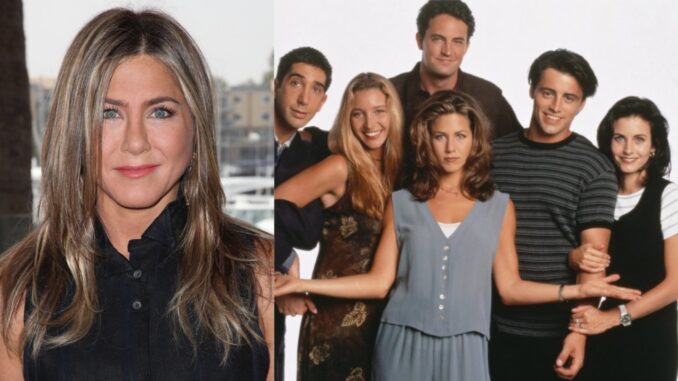
Jennifer Aniston, one of the most beloved actresses of her generation, has become synonymous with the world of sitcoms, thanks to her iconic role as Rachel Green on Friends.
Despite the massive success and cultural impact of the show, Aniston has made it clear in recent years that she has no intention of returning to the sitcom format. This decision has left fans wondering why someone who became a global star through the world of comedy would turn her back on it. In this article, we explore the reasons behind Aniston’s refusal to return to sitcoms and delve into the personal and professional factors that have shaped her decision.
Before diving into why Aniston has said goodbye to sitcoms, it’s important to understand the magnitude of Friends in her career. Premiering in 1994, Friends became a global sensation almost overnight. Aniston’s character, Rachel Green, quickly became a fan favorite, cementing her as a comedic star and a fashion icon of the 90s. The show ran for ten successful seasons, and its impact on pop culture continues to resonate, with younger generations discovering the series through streaming platforms like Netflix.

For many, Friends is the pinnacle of sitcom success. The chemistry of the ensemble cast, the witty writing, and the relatability of its characters set the show apart from its peers. Aniston’s portrayal of Rachel earned her numerous accolades, including an Emmy Award, a Golden Globe, and several Screen Actors Guild Awards. However, this massive success also came with its challenges, particularly when it came to shaping the future of her career. One of the primary reasons Aniston has chosen not to return to sitcoms is the issue of typecasting.
After Friends ended in 2004, Aniston began taking on more diverse roles, seeking to challenge herself and showcase her dramatic abilities. While she continued to star in romantic comedies like The Break-Up and Marley & Me, she also started venturing into more serious films, including Cake, in which she played a woman suffering from chronic pain. This role earned her critical acclaim and demonstrated her ability to tackle weightier material. Another key factor in Aniston’s decision is the changing landscape of television. When Friends premiered in the mid-90s, sitcoms were the dominant form of entertainment on TV. Shows like Seinfeld, The Fresh Prince of Bel-Air, and Will & Grace ruled the airwaves, offering 30-minute episodes filled with humor and heart. However, the television industry has evolved dramatically since then.
In today’s era of streaming platforms, binge-watching, and prestige television, serialized dramas have taken center stage. Shows like Breaking Bad, Game of Thrones, and The Crown have reshaped the way audiences consume TV, and sitcoms, though still present, no longer hold the same level of dominance they once did. For Aniston, who is always looking to stay relevant and adapt to new trends, returning to a sitcom feels like a step backward. She’s excited by the possibilities that modern television offers, particularly in long-form, dramatic storytelling.
